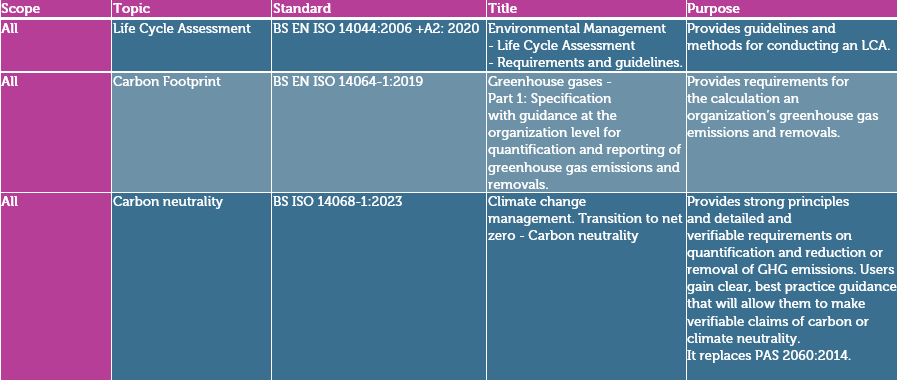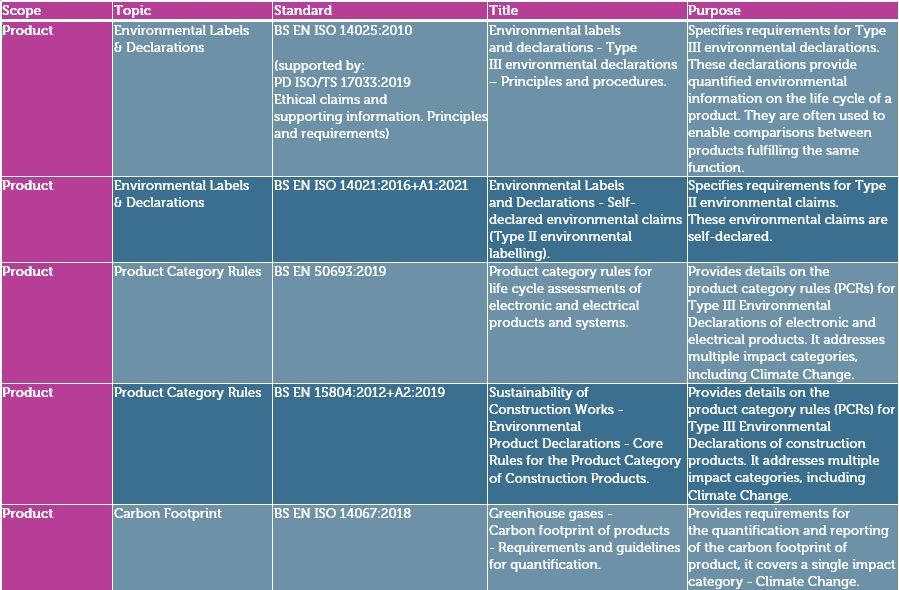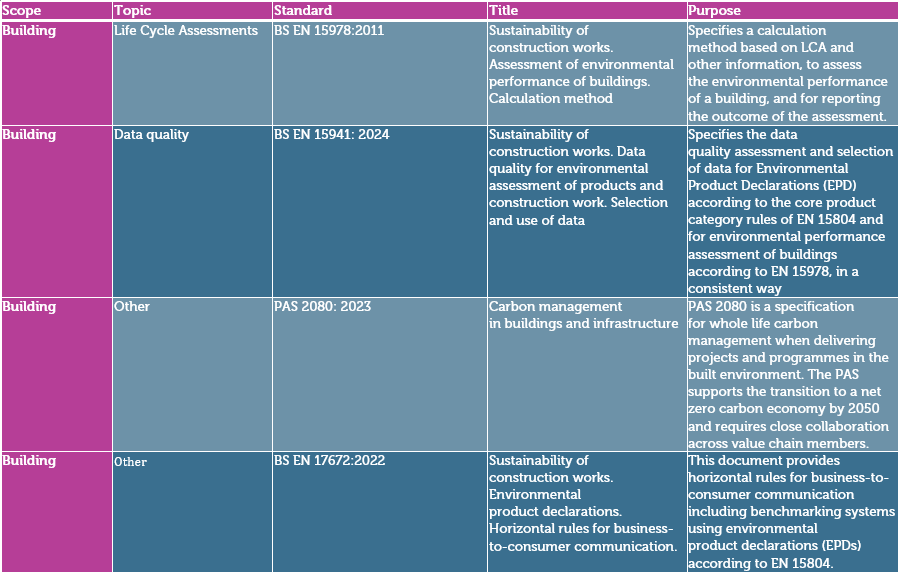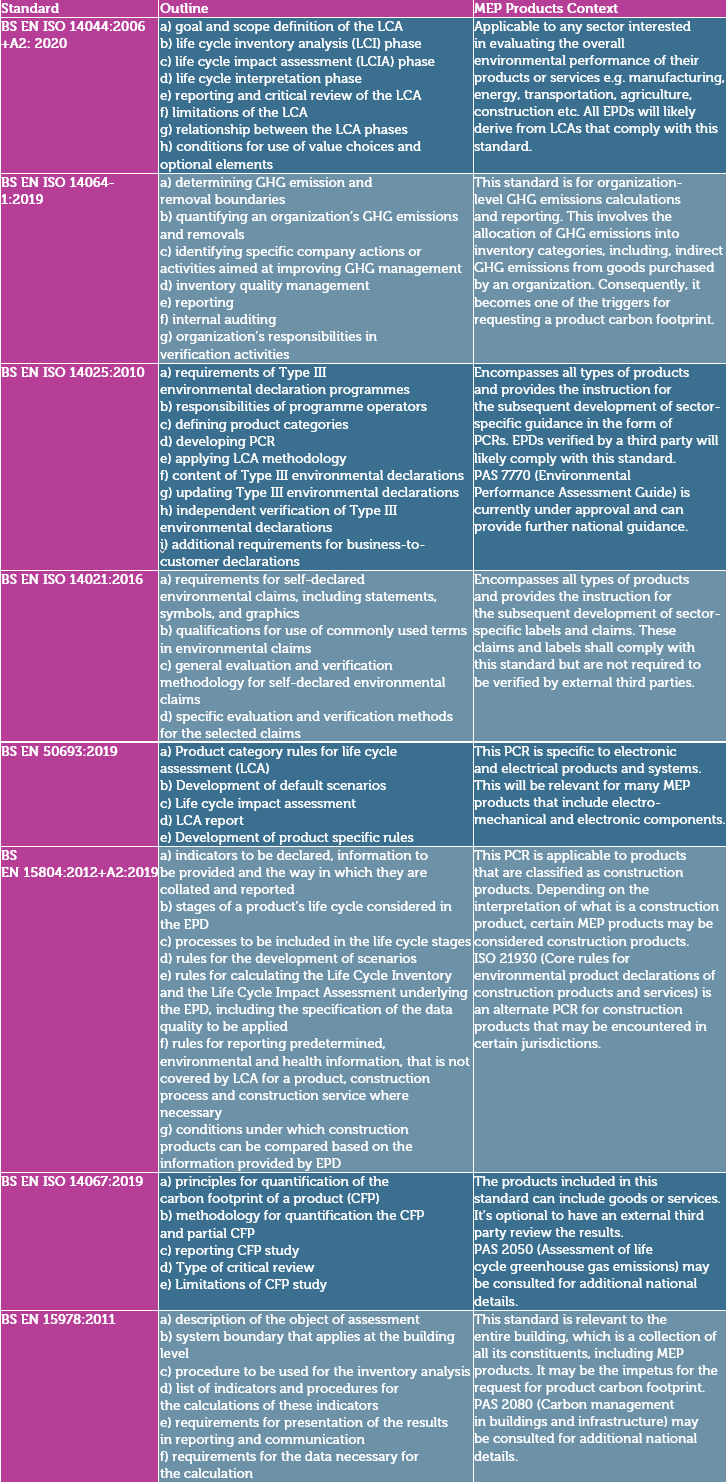Navigating the Standards
Standards: A gateway to sustainability*
Navigate the complexity of standards governing the embodied carbon of products, tailored specifically for the MEP (Mechanical, Electrical, and Plumbing) industry.
This page serves as a springboard as a simplified overview between standards and topics.
It is an introductory resource, offering a streamlined overview of international and regional standards pertinent to measuring and communicating embodied carbon.

It covers MEP product standards related to life cycle assessments (LCA), environmental product declarations (EPD), product category rules (PCR), and product carbon footprints (PCF). These standards are crucial for empowering you to quantify, report, and champion the environmental performance of products across diverse markets.

Let's start with an overview...
The following tables provides a high-level overview of some key standards that are relevant for calculating and communicating the embodied carbon of products.
The standards are organized by scope, indicating its relevance to products or the building; and by topic, indicating its relevance to LCA, EPD, PCF, or PCR.

Understanding the inter-relationship between standards
Understand how the standards relate to one another. Our diagram illustrates that product embodied carbon may be determined via different pathways and PCRs:
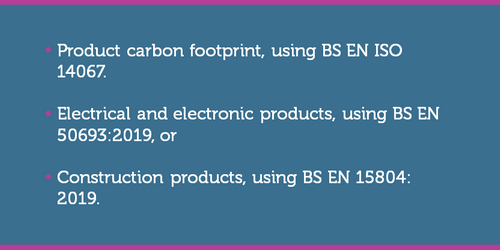
Each PCR may define different impact categories and life cycle stages which makes it difficult to make comparisons between products that use different methods.
The diagram also captures some examples of regional/national variants that may further refine the product category rules using product specific rules (PSR). The PSR allow tailoring towards more specific product categories, for example, Fire Safety Systems.
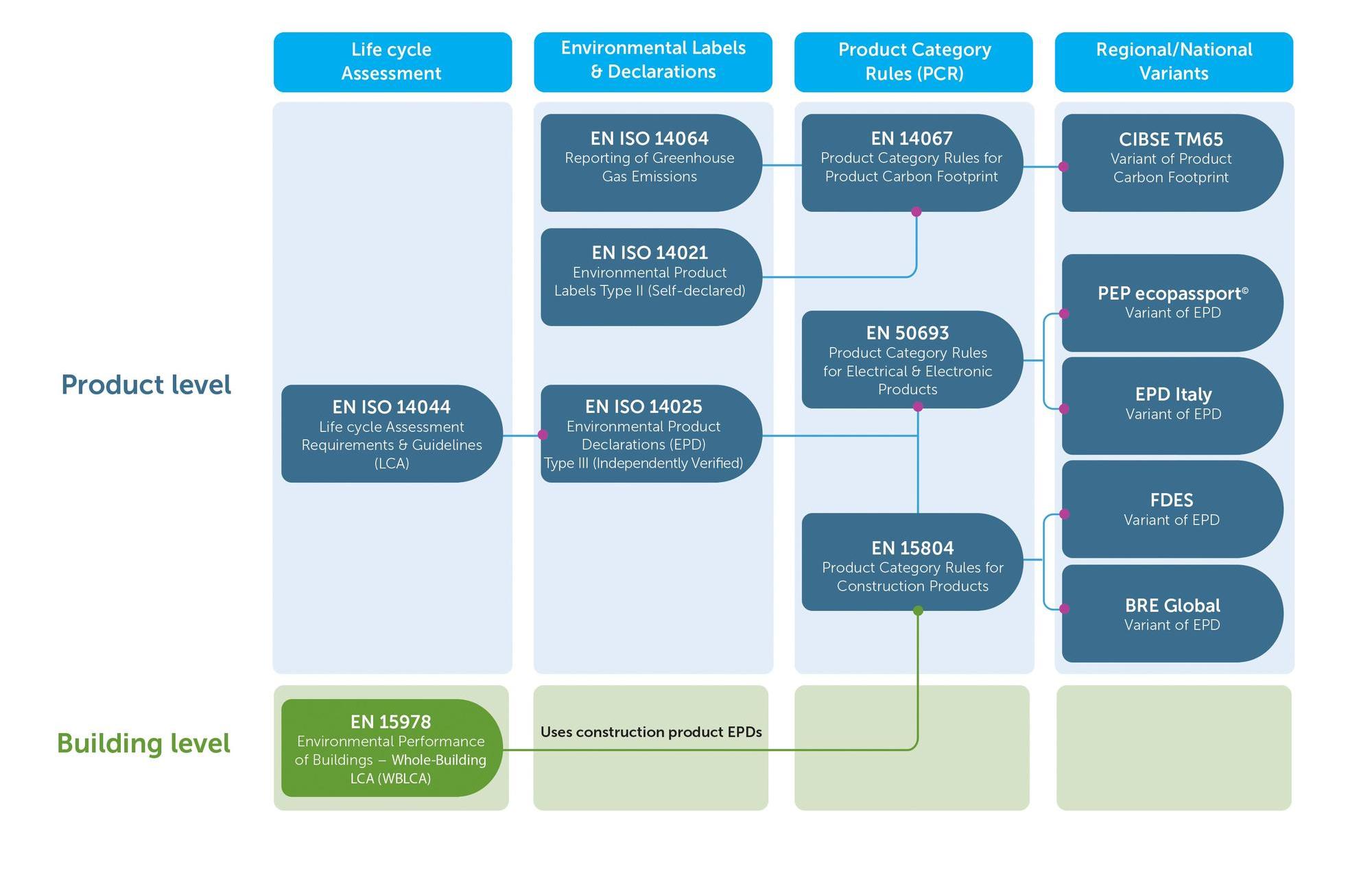

EPD and PCF Coverage
Our diagram illustrates how the product carbon footprint (ISO 14067) covers a subset of the impact categories that are addressed within the scope of an environmental product declaration (ISO 14025).
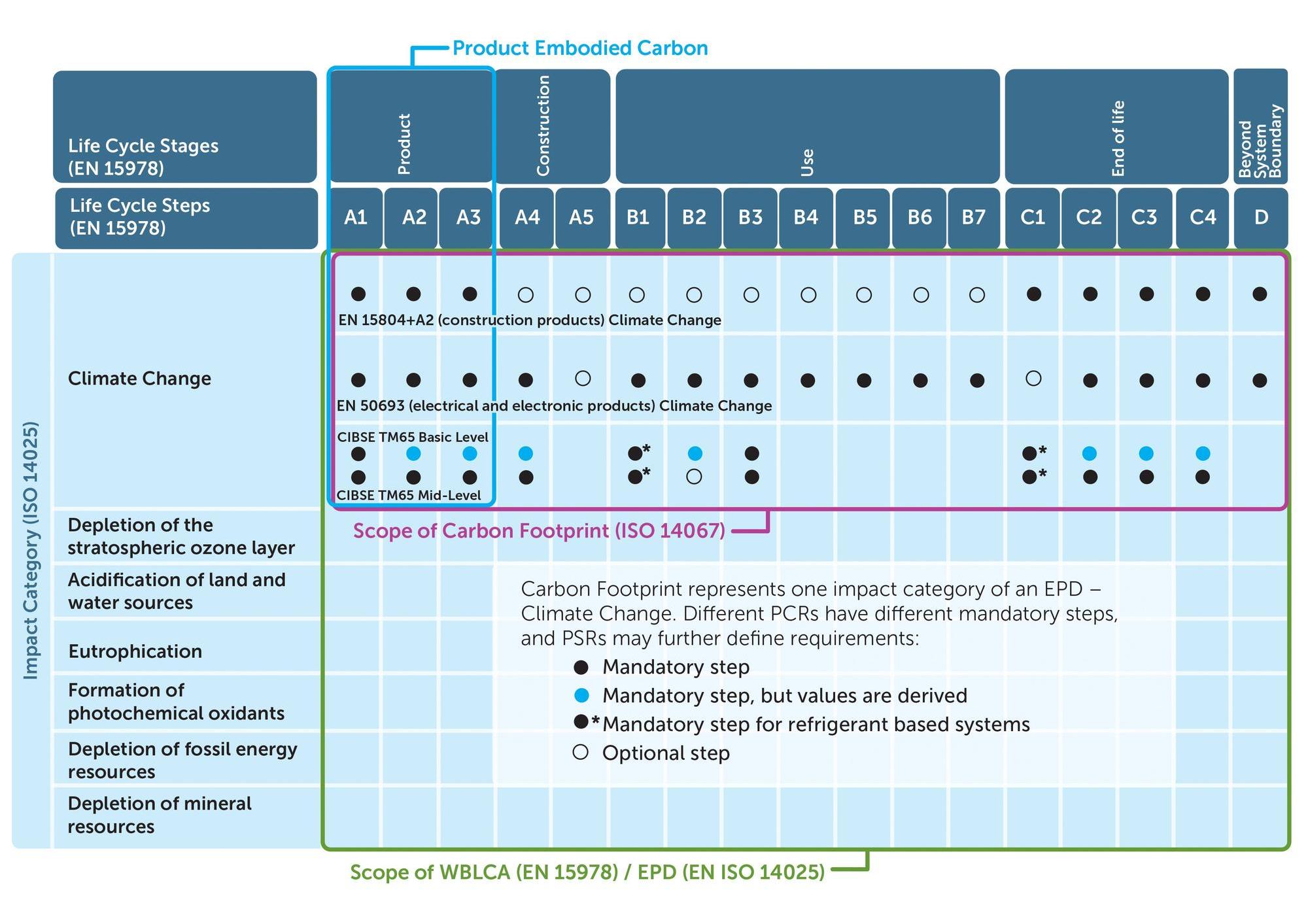

Now the detailed list of standards…
For more context on how these standards relate to MEP products, the following table presents the outline of the standard, and where relevant, provides additional references to national guidance such as BSI PAS.
BSI Discount to All BEAMA Members
BSI extends a 20% discount to all BEAMA members on the key standards relevant for calculating and communicating the embodied carbon of products, including BS EN ISO 14044:2006+A2:2020, BS EN ISO 14064-1:2019, BS ISO 14068-1:2023, BS EN ISO 14025:2010, PD ISO/TS 17033:2019, BS EN ISO 14021:2016+A1:2021, BS EN 50693:2019, BS EN 15804:2012+A2:2019, BS EN ISO 14067:2018, BS EN ISO 14083:2023, BS EN 15978:2011, BS EN 15941: 2024, BS EN 17472:2022, PAS 2080: 2023, and BS EN 17672:2022.
To get this discount please log in to the BEAMA website and return to this page to view the discount code.
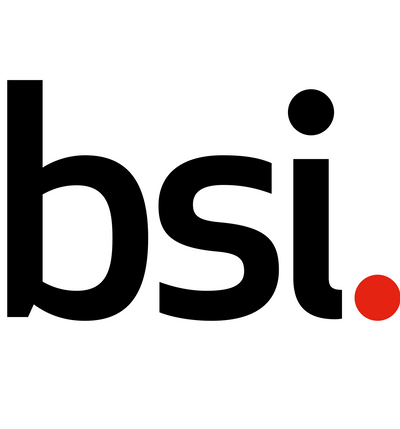


References
[1] ISO 14044:2006, Environmental management — Life cycle assessment — Requirements and guidelines (ISO, 2006)
[2] ISO 14064-1:2018 - Greenhouse gases — Part 1: Specification with guidance at the organization level for quantification and reporting of greenhouse gas emissions and removals (ISO, 2018)
[3] ISO 14025:2006 - Environmental labels and declarations — Type III environmental declarations — Principles and procedures (ISO, 2006)
[4] ISO 14021:2016 - Environmental labels and declarations — Self-declared environmental claims (Type II environmental labelling) (ISO, 2016)
[5] BS EN 50693:2019: Product category rules for life cycle assessments of electronic and electrical products and systems (BSI, 2019)
[6] BS EN 15804:2012+A2:2019: Sustainability of construction works. Environmental product declarations. Core rules for the product category of construction products (BSI, 2019)
[7] ISO 14067:2018 - Greenhouse gases — Carbon footprint of products — Requirements and guidelines for quantification (ISO, 2018)
[8] BS EN 15978:2011: Sustainability of construction works. Assessment of environmental performance of buildings. Calculation method (BSI, 2011)
*This page is maintained and regularly updated by BEAMA. For the most accurate and up-to-date information, it is recommended official sources are consulted. Please note, for example, that there may be other standards which could be used to fulfil your purposes and objectives in this and related areas. For further information, consult BSI, the UK’s National Standards Body at https://knowledge.bsigroup.com/. For any other comments, please contact BEAMA.

